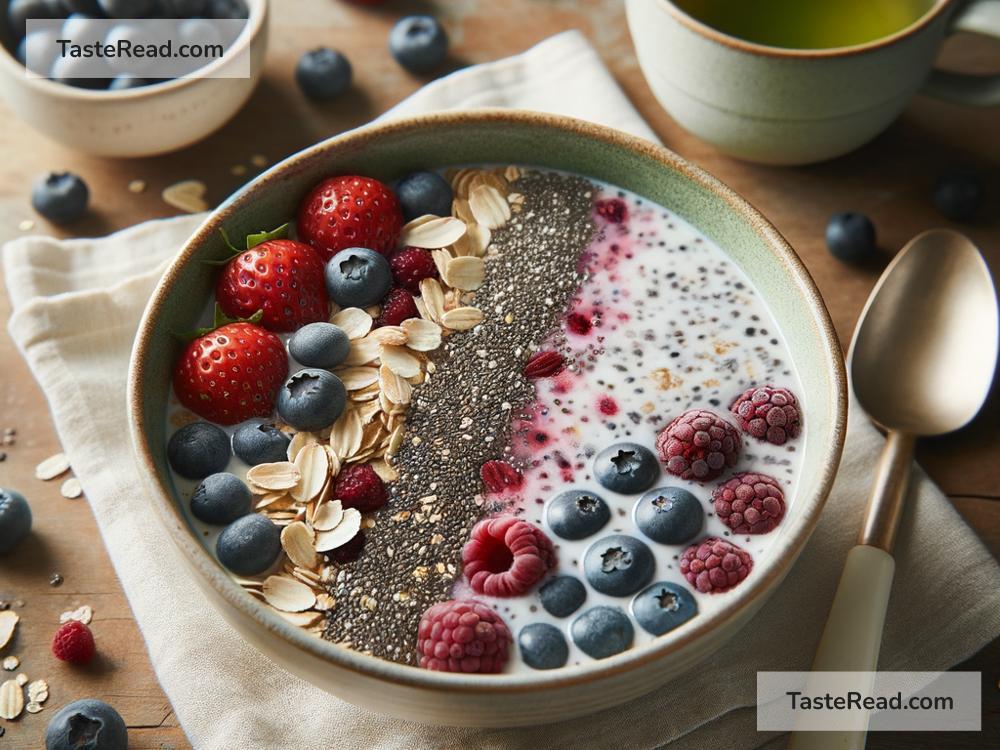The Impact of Dietary Fiber on Health
We often hear the phrase “eat more fiber,” but many people don’t know why fiber is so important for our health. Dietary fiber is a type of carbohydrate that our bodies can’t digest. Unlike other nutrients like fats, proteins, and sugars that get absorbed into the bloodstream, fiber stays mostly intact as it moves through the digestive system. While it doesn’t provide calories or energy, its benefits are essential for good health. Let’s take a closer look at why dietary fiber matters, and how it can improve our well-being.
What Is Dietary Fiber?
Dietary fiber is found in plant-based foods such as fruits, vegetables, whole grains, nuts, and seeds. It comes in two main types:
-
Soluble fiber: This type of fiber dissolves in water and forms a gel-like substance in the gut. Soluble fiber can help lower cholesterol levels and stabilize blood sugar levels. Foods rich in soluble fiber include oats, beans, apples, and carrots.
-
Insoluble fiber: Insoluble fiber doesn’t dissolve in water. It adds bulk to stool and helps food move through the digestive system more easily. This type of fiber is especially good for preventing constipation. You can find insoluble fiber in foods like whole wheat, brown rice, nuts, and many vegetables.
Most foods that are high in fiber contain a mix of both types, so eating a variety of fiber-rich foods is the best way to get the benefits.
How Dietary Fiber Improves Health
Fiber does more than just keep your digestion running smoothly. It plays a critical role in preventing disease, controlling weight, and boosting overall wellness. Here are some key ways fiber impacts health:
1. Improves Digestive Health
Fiber is best known for its role in improving digestion. Insoluble fiber adds bulk to stool, making it easier for your body to move waste out of the digestive tract. This helps prevent constipation, a common condition that can cause discomfort and bloating. Fiber also keeps your gut healthy by promoting good bacteria in your intestines. A balanced gut microbiome (the community of bacteria in your digestive system) is linked to better digestion and even stronger immunity.
2. Helps Control Blood Sugar Levels
Eating foods high in fiber can help manage blood sugar levels, which is important for people with diabetes or those at risk for the condition. Soluble fiber slows down how quickly your body absorbs sugars. This prevents blood sugar spikes and keeps levels more stable. If you regularly include fiber in your meals, it can also improve your body’s sensitivity to insulin, the hormone that regulates blood sugar.
3. Lowers Cholesterol Levels
Soluble fiber is particularly helpful in reducing cholesterol levels. It binds to cholesterol in the digestive system and helps remove it before it gets absorbed into the bloodstream. Lower cholesterol levels reduce the risk of heart disease, stroke, and other related conditions. Eating high-fiber foods, such as oats and beans, can significantly benefit heart health over time.
4. Supports a Healthy Weight
Fiber is known to play a big role in weight management. High-fiber foods are often filling, which means you feel satisfied longer after eating them. When you feel full longer, you’re less likely to overeat or snack on unhealthy foods. Additionally, because fiber doesn’t get digested like other carbs, it doesn’t provide extra calories. This helps keep your overall calorie intake in check.
5. Reduces the Risk of Chronic Diseases
A diet high in fiber has been linked to a lower risk of chronic diseases such as heart disease, certain types of cancer (like colorectal cancer), and type 2 diabetes. Researchers believe that fiber’s ability to improve digestion, lower cholesterol, and control blood sugar contributes to its protective effects over the long term.
How Much Fiber Do You Need?
The amount of fiber you need depends on your age and gender. For adults, the general recommendation is about 25 grams per day for women and 38 grams per day for men. However, many people don’t get enough fiber in their daily diet. On average, most adults consume only about 15 grams of fiber per day—much less than they need.
To increase your fiber intake, start with small changes. Add an extra serving of vegetables to your meals, switch from white bread to whole-grain bread, or enjoy a handful of nuts or seeds as a snack. Gradually increasing fiber in your diet helps your body adjust to the changes and prevents digestive discomfort.
Tips for Eating More Fiber
Here are some practical tips to help you include more fiber in your diet:
- Choose whole grains: Swap refined grains like white rice or white bread for whole-grain options like brown rice, whole wheat, or quinoa.
- Eat more fruits and veggies: Fill half your plate with a variety of colorful fruits and vegetables.
- Snack on nuts and seeds: Almonds, sunflower seeds, and walnuts are great fiber-rich snacks.
- Add beans and legumes: Lentils, chickpeas, and black beans are excellent fiber sources and can be added to soups, salads, and main courses.
- Read food labels: Look for products labeled “high in fiber” and aim for foods with at least 3 grams of fiber per serving.
Final Thoughts
Dietary fiber is a powerful tool for maintaining good health. It improves digestion, supports heart health, helps manage weight, and reduces the risk of chronic diseases. By making simple changes to include more fiber-rich foods in your diet, you can enjoy better overall health and feel more energized in your daily life.
Start small, stay consistent, and soon you’ll reap the benefits of this often-overlooked nutrient. So, the next time you hear “eat more fiber,” you’ll know exactly why it’s important—and how to make it a part of your healthy lifestyle.


